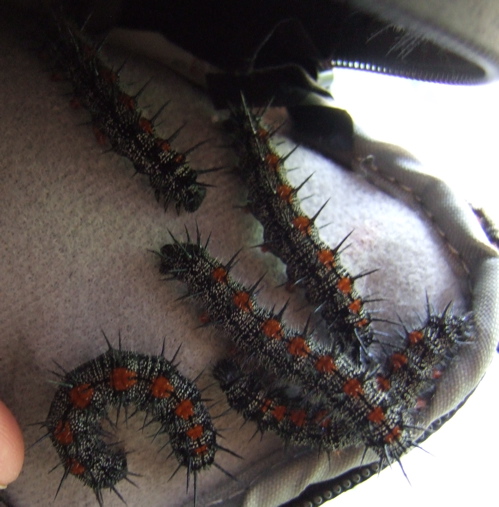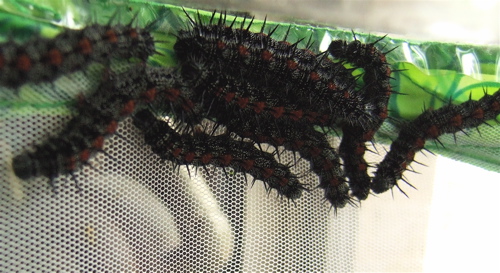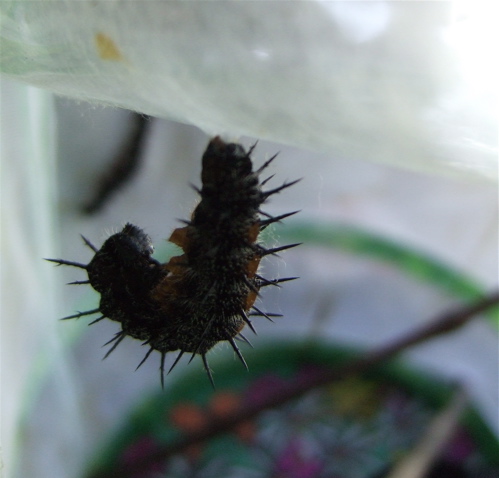 Last week, when I was on the bike trail, I came across a ton of mourning cloak caterpillars. They were trying to cross the path, some made it, some got squished by unknowing bike riders. I tried to take some home, I fit as many as I could in my little pouch and brought them home to our butterfly ranch...I ended up with 14.
Last week, when I was on the bike trail, I came across a ton of mourning cloak caterpillars. They were trying to cross the path, some made it, some got squished by unknowing bike riders. I tried to take some home, I fit as many as I could in my little pouch and brought them home to our butterfly ranch...I ended up with 14.
They are a cool little caterpillar, dark with a bit of blue and red spots down their back. And check out those wicked spikes to discourage you from eating them. As I was getting my butterfly ranch set up for my mourning cloak caterpillars and taking a photos, a friend on Facebook posted photos of some pest caterpillars in his trees, wondering if anyone had suggestions to get rid of them. He had contacted a pest control company who told him they were gypsy moth caterpillars and would kill his tree. I looked at the photos and the caterpillars were not gypsy moth caterpillars, they were mourning cloak caterpillars, just like mine.
I sent a desperate plea to my Facebook friend to not exterminate the caterpillars, they were not invasive, exotic caterpillars, they were native and would not destroy his tree. I was irritated that a pest control company couldn't tell the difference. I don't blame my friend for being confused...these caterpillars have some similar habits and if you are unfamiliar with mourning cloaks, I could see how you would be worried for your tree.
Gypsy moths feed in large groups. Mourning cloak caterpillars also remain in one large group after hatching from their eggs and feed together as caterpillars. If you ever come across a cluster and disturb them, they'll shake and vibrate en masse. Their voracious appetites may denude a branch, but they will not kill the tree. Once they are full grown, the who group leaves the tree at about the same time and heads off to form their chrysalis to turn into a butterfly.
My friend ended up leaving his caterpillars alone and they moved on to pupate, but I do wonder now how many unknowing people have mourning cloak caterpillars experminated?
Mine have all taken to the J-position and are forming their chrysalises. Hopefully, I will have photos of lots these gorgeous black butterflies to show later this summer.



